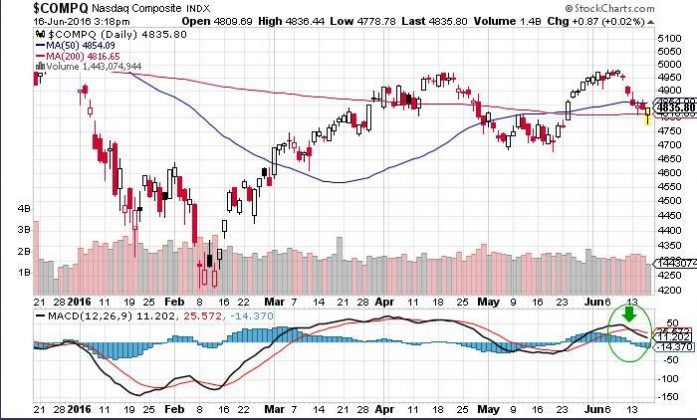What Strange Lessons We Can Learn From Money Monster

I just saw the movie.
I won’t give it away, you should see it … its good!
Two items from the movie got me thinking:
Corporate Socialism
Clooney’s character Lee Gates (a spoof on Jim Kramer) tries a form of cumbersome crowd sourced investing to juice a stock higher.
He asks his millions upon millions of viewers to buy a small amount of one company, the collective buying would be enormous and push the stock sky high!
Does it work?
You’ll have to check out the movie for yourself.
I had mentioned the same concept about a year ago in a prior article.
I was intrigued then that given the number of people on social media, done right, this approach could effectively socialize corporations.
That is, let’s say a target is identified by a social media authority (millions of followers). And each of those followers diligently buys $10 or $100 of stock through their online broker.
All of a sudden a company has a million + shareholders. Well why not only service those shareholders at cost + a tiny margin. The revenue volume would be huge which could make up for the loss of margin and control is effectively transferred / socialized amongst millions of shareholders ….… hmmmmm?
Africa ‘oh Africa
The second item that got me thinking
[Spoiler alert]
The use of South Africa as the source for generating ill-gotten gains.
Again I won’t go into detail here but as a behavioral finance student I find it interesting that [South] Africa is viewed as corrupt, dangerous yet high tech… I’m not saying it isn’t and it does remind me of a society portrayed in the movie Chappie by Neil Blomkamp.
But I’m a contrarian and if this negativity towards South Africa is surfacing out of mass psychology I would say there may be reason to explore going the other way.
A day when Africa itself emerges as a world super power?
Believe the unbelievable!
I love the Stock Traders Almanac.
I find it interesting that most professionals consider market timing a worthless exercise. As if it’s best to ignore its very existence, which, to us is like ignoring the tides of the ocean because they don’t always make sense!?
But seasons do exist in the market and if everyone disdains them then a serious market student should pay attention for an edge.
The Almanac Reads: Best Eight Months with MACD timing:
“NASDAQ’s amazing eight-month run from November through June is hard to miss … A $10,000 investment in these eight months since 1971 gains $542,597 versus a loss of $1,655 during the void that is the four-month period July-October”
Combine the above with a Moving Average Convergence Divergence Indicator (MACD), a technical momentum indicator, creates stellar returns. The above $10,000 leaps to $1,404,313 while the $10,000 during the four month void shrinks to $6,748.
The MACD indicator is incorporated by looking for a crossover (momentum shifting upwards or downwards) beginning the last month of each period.
So from October 1st (last month of worst 4) begin looking for an upward MACD crossover as a buy signal and from June 1st prepare to exit on a MACD crossover sell signal.
As can be seen from the chart below – said MACD sell signal occurred on June 10th ushering in the Worst 4 month’s period (to October 31st).
Worth monitoring?

Figure 1 – NASDAQ displaying MACD crossover sell signal on time for worst 4 months of the year
Final Thought
It is remarkable to us that it has been 13 months since the major equity averages made their all-time highs and nearly 19th months since the market decelerated from its long move up off the 2009 lows.
That’s 19 months and the market has essentially gone nowhere!
Instead of the common media refrain that we are only 3% or 2% or 1% from all-time highs we think more ominously that 19 months have passed by and the market has failed to make new highs.
What would pull the market out of its 19 month top?
Ironically we think that higher interest rates will be the catalyst.
As we write Global Bond yields are plumbing multi-decade and in some instance multi-century lows. Whether it is near term Brexit fears or out of control central banks, interest rates do not seem to support the fundamentals.
CPI, for example, in the US is constantly surprising to the upside as does unemployment numbers (lower).
The Fed (and other central banks) have broken the price transmission mechanism by suppressing interest rates – creating bubbles and impoverishing the middle class – and hence the market may indeed applaud when a normal pricing mechanism reasserts itself.
The corollary is that markets may move lower on lower interest rates in a kind of negative reinforcement loop as it were – which is exactly in synch with what the Stock Trader’s Almanac is predicting!
—
Thank you for reading my post. I regularly write about private market opportunities and trends. If you would like to read my regular posts feel free to also connect on LinkedIn, Twitter or via Atlanta Capital Group Investment Management.
Greg Silberman is the Chief Investment Officer of Atlanta Capital Group Investment Management [ACGIM]. Atlanta Capital Group specializes in creating custom private market solutions for RIA/Family Office clients.
Advisory Services offered through Atlanta Capital Group Investment Management.
Nothing in this article should be interpreted as a recommendation to buy any security. Please conduct your own due diligence.